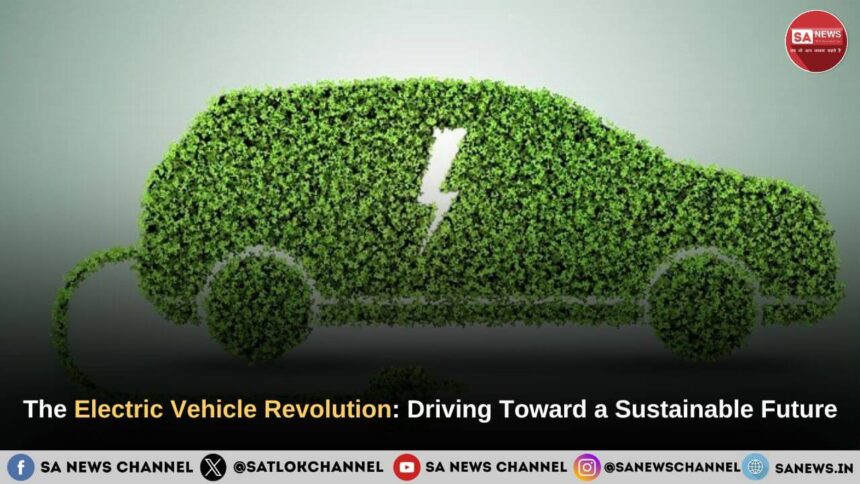Electric Vehicle Revolution: All-electric vehicles, also called battery-electric vehicles, have a battery that is charged by plugging the vehicle into charging equipment. The shift from traditional combustion engines to electric power is not just a trend; it represents a fundamental change in how we think about transportation. Here’s an overview of the current landscape and future of electric vehicles.
Battery Electric Vehicle (BEV): Fully powered by electricity. These vehicles are more efficient compared to hybrids and plug-in hybrids.
Hybrid Electric Vehicle (HEV): The vehicle uses both the internal combustion (usually petrol) engine and the battery-powered motor powertrain.
1. Electric Vehicle Revolution: The Growing Popularity of EVs
In recent years, sales of electric vehicles have surged. Consumers are increasingly recognizing the benefits of EVs, including lower operating costs, reduced emissions, and advancements in technology. These are electric vehicles, and even in cities outside of Delhi, they are gaining popularity. However, combustion-engine vehicles are still the norm in many parts of the country.
2. Government Incentives and Policies
In India, the government has introduced various schemes across the EV value chain to incentivize production, adoption, and usage. Governments around the world are implementing policies to encourage EV adoption. Tax incentives, rebates, and infrastructure investments are making it easier for consumers to make the switch. Countries like Norway and Germany provide some of the best examples of this transformation.
3. Charging Infrastructure Expansion
A critical component of the EV revolution is the expansion of charging infrastructure. Fast-charging stations are becoming more common, reducing range anxiety for potential EV buyers. Companies and governments are collaborating to build a network of charging stations, making it easier for drivers to charge their vehicles on long journeys.
4. Electric Vehicle Revolution: Technological Advancements
Battery technology is at the heart of the EV revolution. Innovations in lithium-ion batteries, solid-state batteries, and alternative materials are driving down costs and improving range and performance. As battery technology advances, we can expect longer-lasting batteries and faster charging times, making EVs even more popular.
5. Environmental Impact
Electric Vehicle Revolution: Transitioning to electric vehicles can significantly reduce greenhouse gas emissions and air pollution. While the production of EVs and their batteries presents challenges, the overall lifecycle emissions are lower than traditional vehicles. As renewable energy sources like solar and wind become more prevalent, the environmental benefits of EVs will only increase.
Conclusion
The electric vehicle revolution is more than just a shift in how we power our cars; it represents a broader movement toward sustainable living and environmental stewardship. Electric vehicles will lead to a better and more sustainable future for individuals and communities. As technology continues to improve and infrastructure expands, the adoption of electric vehicles is expected to accelerate, paving the way for a cleaner, greener future.
FAQ About Electric Vehicle Revolution
1) When was the first EV made?
Around 1832, Robert Anderson developed the first crude electric vehicle, but it wasn’t until the 1870s or later that electric cars became practical.
2) How much does an EV cost in India?
Currently, there are 45 electric cars on sale in India. Of these, the MG Comet EV is the cheapest EV, while the BMW i7 is the most expensive electric car in India.
3) Why use EVs?
EVs do not require fossil fuels like petroleum and diesel.









